



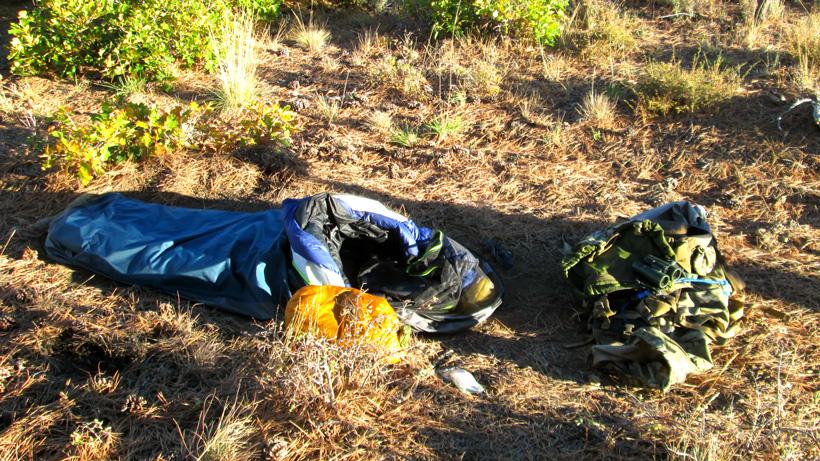
Photo credit: Trail Kreitzer

You can literally sleep anywhere in a bivy sack. Photo credit: Lorenzo Sartini
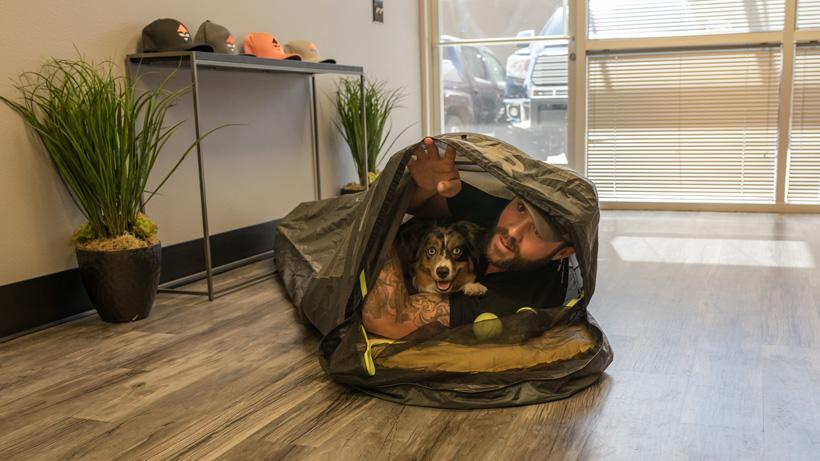
There's not a lot of room in a bivy sack. But Lorenzo can fit his dog Buck in one. Photo credit: Brady Miller
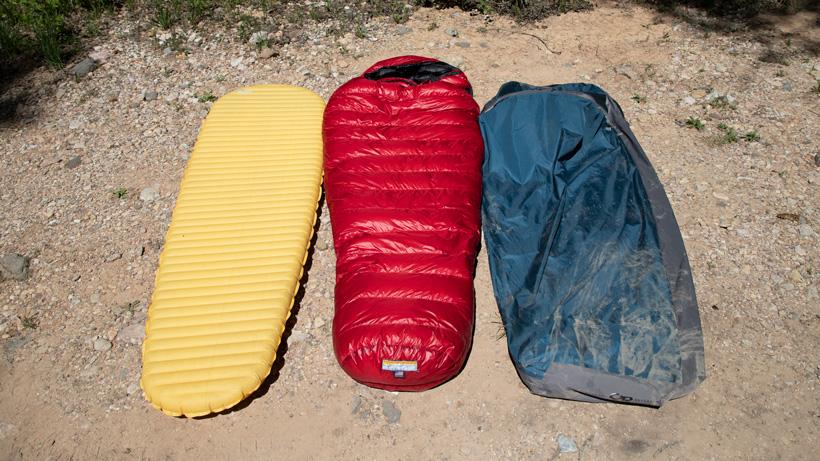
The bare essentials for bivy sack hunting.From left to right: Therm-A-Rest NeoAir Xlite sleeping pad, Western Mountaineering Alpinlite 20 degree sleeping bag, and Outdoor Research Alpine Bivy sack. Photo credit: Chris Neville
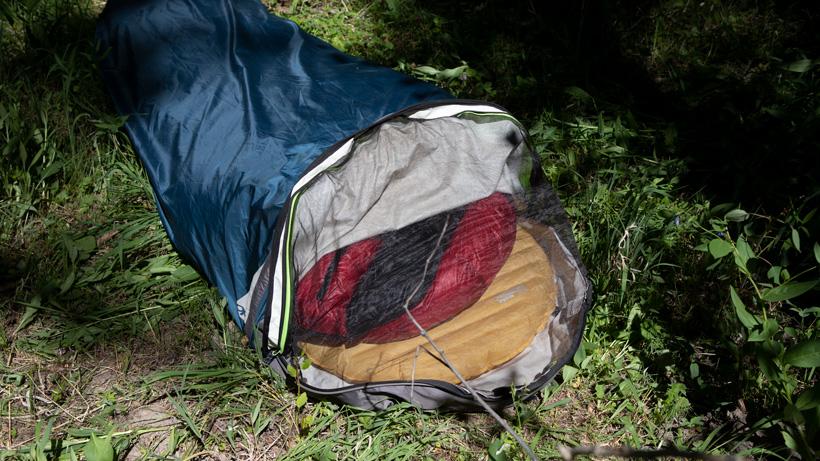
Showing the bug net system on a bivy sack. Photo credit: Chris Neville
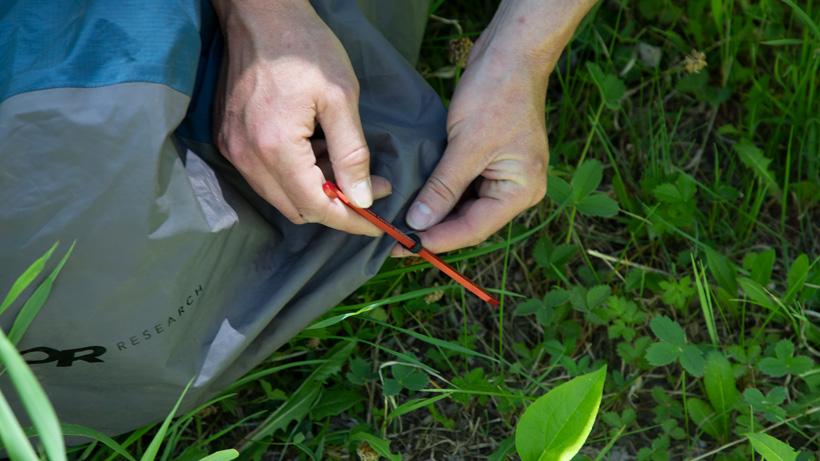
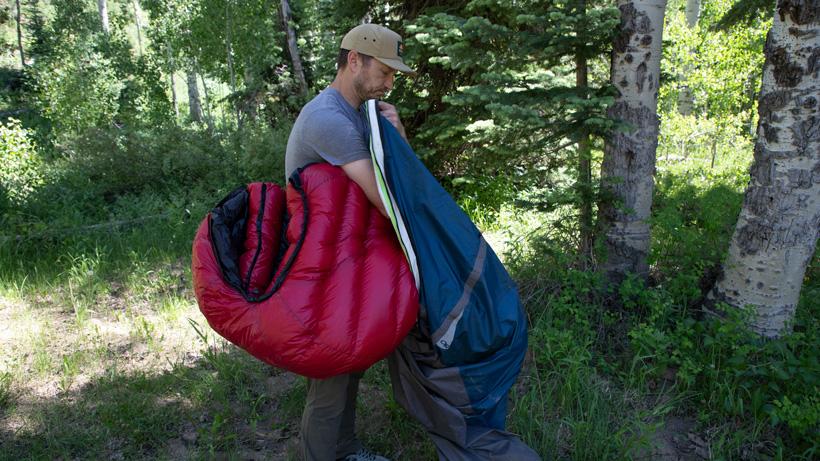
I prefer to keep my sleeping bag inside my bivy when I stuff it inside my backpack for a quick camp setup at night. Photo credit: Chris Neville
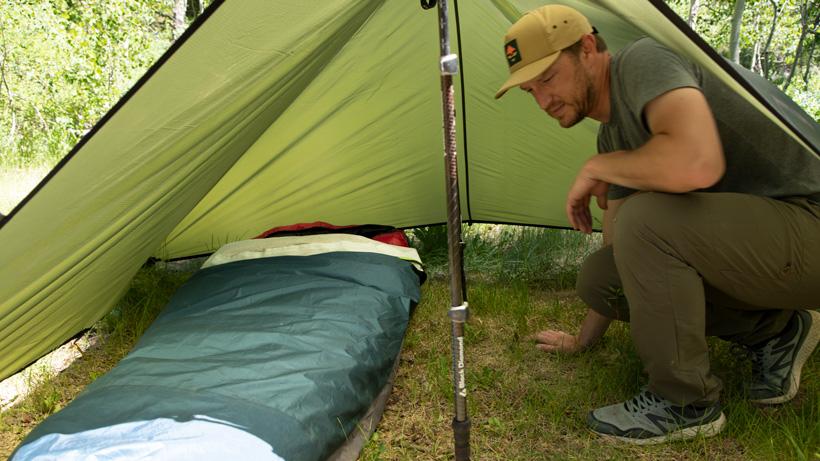
Showing the room inside a bivy sack and tarp camp setup. Photo credit: Chris Neville

Bivouac style hunting gained traction for me about 17 years ago. I was drawn to the fact that a bivy sack offered an extremely lightweight simple option to stay dry while spiking out in the backcountry. Since then, I have continued to use a bivy for almost all of my overnight hunts despite the fact that there are some good lightweight tent options. I understand the drawbacks, but a bivy sack is a compelling shelter option that I believe more people should consider. I’m convinced that using a bivy has made me a more successful run and gun elk hunter.
Photo credit: Trail Kreitzer
A bivy sack is a simple one-man waterproof shelter. As the name implies, it’s basically a sack that you slide your sleeping bag into and is designed to keep you and your bag out of the elements while you’re sleeping. Bivys were originally used as a minimalist shelter by thru-hikers and climbers on multi-day trips. Some bivys are only a waterproof sack while others have pole(s) to keep the fabric up off of your face and head. There are several bivys out there. We carry two of the very best bivy sacks in our GOHUNT Gear Shop: the Outdoor Research Alpine and Helium.
For even more information and a quick look at the Helium bivy sack, you can check out this gear review video below:
You can literally sleep anywhere in a bivy sack. Photo credit: Lorenzo Sartini
The major advantage of any bivy over a tent is the ability to quickly set it up. It can be placed in areas where you may not be able to pitch a tent; for example, a deer or elk bed on a steep slope will work if you need it to. You really only need a flat spot about 6’ x 2’. A bivy is extremely mobile. In the evening, you are in bed in a matter of minutes and can be packed and ready to go just as quickly in the morning. Setting up a bivy takes much less time than a tent. They are waterproof so they make a nice addition when using a floorless shelter and stove (no need for a tent footprint). They are lightweight. The Outdoor Research Helium bivy weighs in at 17 oz and the Alpine bivy is 2 lbs. The biggest benefit to bivy sack hunting is that it allows you to be extremely mobile.
There's not a lot of room in a bivy sack. But Lorenzo can fit his dog Buck in one. Photo credit: Brady Miller
Some people find them claustrophobic, especially when the lid is closed. You cannot get dressed in one and the headroom above your face even with a pole/hoop feature is minimal. There is maybe enough to read a book inside one, but just barely. Riding out multiple days of bad weather like… rain or… snow… is not recommended. It can be tough. If you expect multiple days of bad weather, pair a bivy with a tarp or floorless tipi/tent. Condensation can be an issue in the right conditions and you may have a damp sleeping bag near the footbox when you wake up. This requires you to hang your bag midday to air it out—provided you can. You may spend a day or two with a damp sleeping bag near your feet. Bugs, snakes and small animals could also be an issue if you don’t sleep with it zipped up although, in the many years I have used one, I have never had an issue and, on most nights, I sleep with my head out under the stars.
The bare essentials for bivy sack hunting.From left to right: Therm-A-Rest NeoAir Xlite sleeping pad, Western Mountaineering Alpinlite 20 degree sleeping bag, and Outdoor Research Alpine Bivy sack. Photo credit: Chris Neville
The dimensions are the same for the Alpine and Helium bivy sacks: 26" maximum width x 84" maximum length x 20" maximum headroom. Floor space is 12.6 sq. ft. for both. The two Outdoor Research models we carry are among the roomiest bivys out there. Both will allow you to sleep with a sleeping pad and your bag inside—even with some of the newer thicker 3” plus pads and lofty bags.
Showing the bug net system on a bivy sack. Photo credit: Chris Neville
Also, both of the models we sell have a single pole that goes up over your face to give you some headroom when fully closed and both have a bug net with a zipper to keep the lip partially open and still keep bugs out.
The Alpine is made from three-layer Gore-Tex respiration positive fabric. It has a 30D ripstop upper and 2L nylon plain weave taffeta floor. It is seam taped internally on every seam to keep moisture out. The Helium is made from Pertex Shield+ 2.5L 100% nylon with a 30D ripstop upper with 100% nylon 70D TPU laminate floor. It is seam taped internally on every seam to keep moisture out.
Ripstop nylon is a light-weight nylon fabric with interwoven ripstop reinforcement threads in a crosshatch pattern for added strength and to stop a tear once it starts. Pertex is lighter and, by most accounts, less breathable while Gore-Tex is a bit heavier and breathes very well. Pertex may not wear as well over the long term, while Gore-Tex has a good track record with being both durable while retaining its waterproof integrity.
Both have tabs that can be used for staking them out to the ground. Both have internal straps to keep your sleeping pad from shifting or moving during the night.
I prefer to keep my sleeping bag inside my bivy when I stuff it inside my backpack for a quick camp setup at night. Photo credit: Chris Neville
Both the Alpine and the Helium can be packed up into a stuff sack approximately the diameter of a Nalgene bottle and about twice as long. When I am hunting with a bivy sack setup, I often either use no stuff sack at all or I leave my sleeping bag in the bivy and stuff both in a 13L or 15L compression or dry sack. This allows me to inflate my sleeping pad, insert it inside the bivy with my bag and I’m done.
I would suggest the Alpine bivy sack if you are using it as a standalone without a tarp or floorless shelter. It's more durable and is going to breathe better. I would also likely use the Alpine if I were hunting in conditions where heavy condensation may be an issue—places with wide temperature swings or extended rain expected, which might cause you to keep the lip closed; your breath can build up condensation, or camping in humid climates, lowlands or next to water sources.
The Helium is a great choice to save some weight and perhaps better suited for shorter trips—three to six days—where the weather may be more predictable. I would advise using in conjunction with a tarp, especially with heavy or extended rain in the forecast. It's extremely light and fast though and, if you are hunting more arid conditions and only experiencing light rain or showers, you'd do just fine with the Helium.
Showing the room inside a bivy sack and tarp camp setup. Photo credit: Chris Neville
Bivy hunting has made me a more successful elk hunter and here’s why: I’ve noticed that tent camping tends to tie me to an area and I end up wasting time hiking when I need to be hunting. Elk are big, they cover ground quickly, and often are only active for a short period of time during the morning and evening. A bivy allows you to quickly make camp, get in bed and wake up already in the mix. If you are looking for a lightweight, simple, one man shelter that will keep you dry and help you be more successful, consider adding a bivy sack to your gear list.